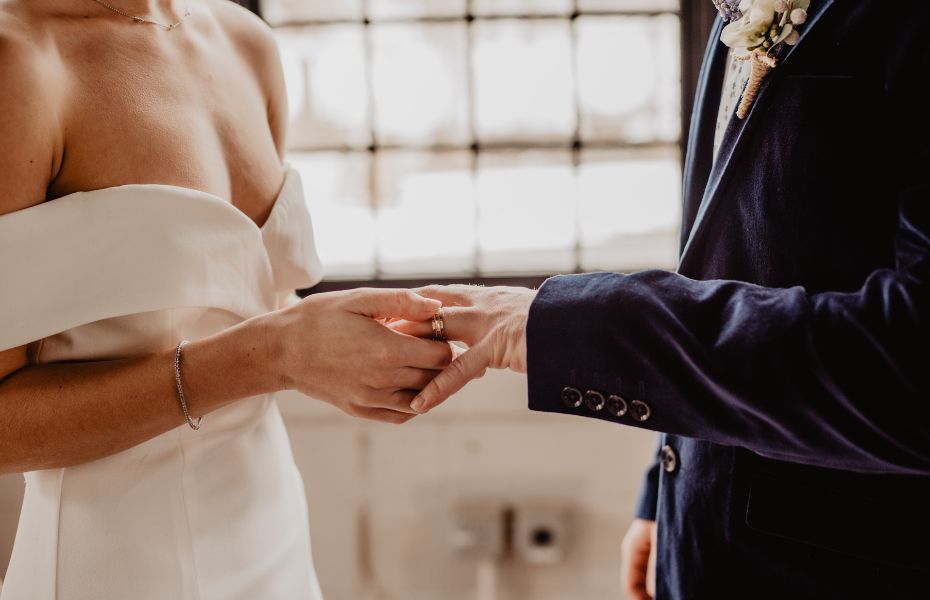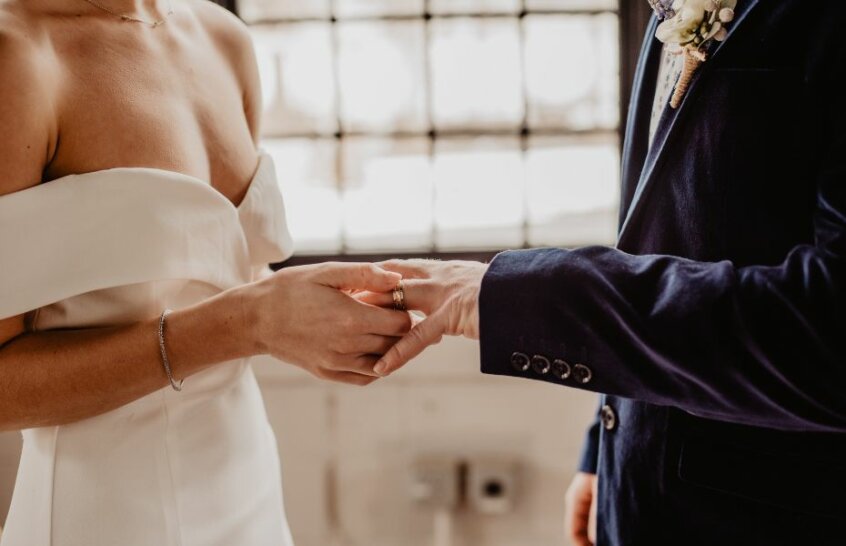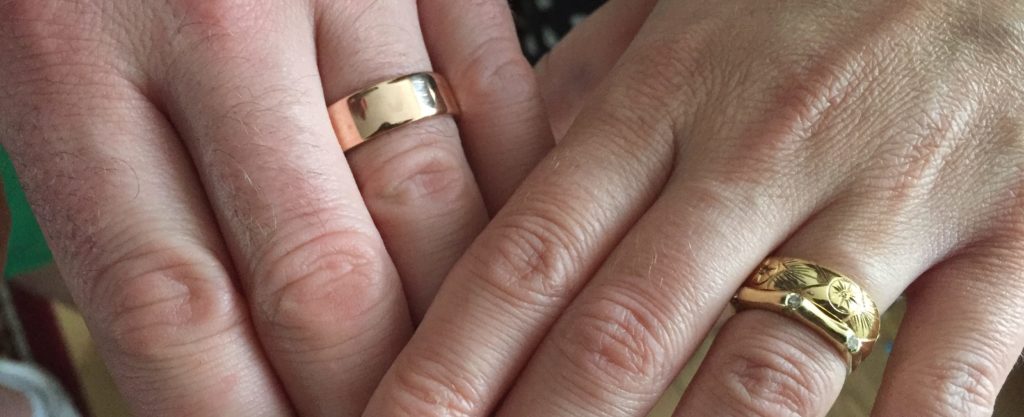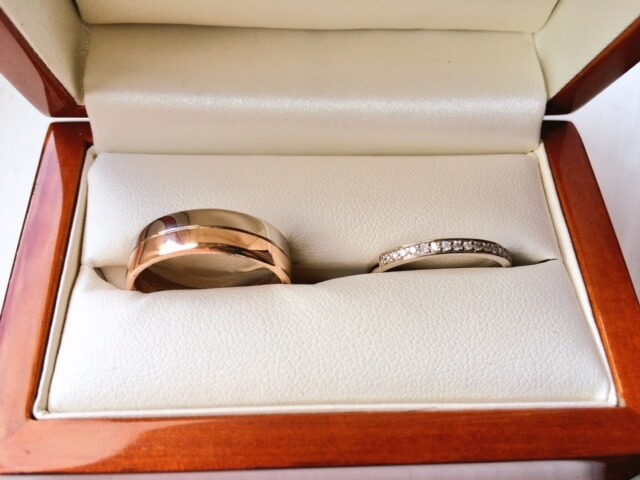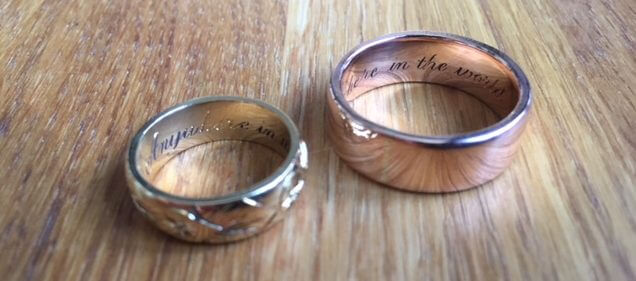Nine times out ten, when meeting a man who is in the planning stage of his wedding ring, there is a sense of trepidation about him. This is completely understandable as the vast majority of men have not worn a ring before, making it feel like alien territory. ‘Hard sale’ experiences on the high street can leave you feeling confused, along with all your friends and family having opinions on the matter.
Where bespoke is different, is that instead of being inundated with a sea of rings that all start to blur together, a good designer will break down the options to make it a simple and enjoyable experience. It is simply a case of making a series of small decisions. None of these questions have right or wrong answers, and you will be amazed at how opinionated you can suddenly become about the minute detail of a ring once the options are broken down for you. With a little bit of knowledge gained from an experienced jeweller who is there to guide you, you will soon have a design you love and you’ll wonder what all those nerves were about.
I have put together the following guide to try and support your decision-making process and hopefully help ease any nerves about designing your ‘forever’ ring.
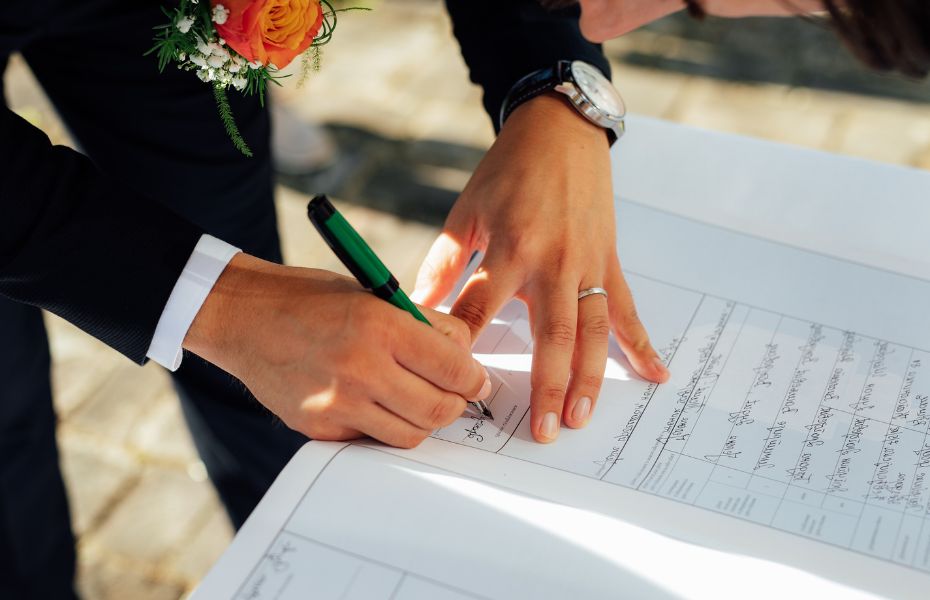
1. Metal
Do you want your wedding ring to match your partner’s ring? Their wedding ring will usually match the metal of their engagement ring and some couples like all the wedding jewellery to be made from the same metal. Others are less worried about this and prefer to select the metal they each personally like best, or use it as an opportunity to spread the budget by going for a different metal.
To give an example, I recently worked with a lovely couple who made their own wedding rings with me. Jas’s engagement ring was made of 18ct yellow gold so she wanted her wedding ring to match it. This makes sense as two rings of the same metal and quality next to each other will not wear each other down. The brassy yellow hue of yellow gold suits her golden complexion beautifully, but next to Cesare’s more pink toned skin, it looked really brash. He opted for the more low key 9ct rose gold, which better complements his complexion.
Even my own husband’s wedding ring does not fully match mine – his is a mixed metal band of 18ct white gold and 9ct rose gold, which happens to be our favourite gold colour combinations. My wedding ring is just 18ct white gold but with a splattering of white diamonds. He wasn’t keen to match those…
A lot of men are understandably concerned about the durability of their ring. The fact of the matter is that no precious metal is indestructible. Whichever metal you choose will collect scuffs and scratches over time. The key is to look after it (remove it when doing anything that will damage it) and to embrace the slow wear and dulling down of the surface of your ring. Precious metals age gracefully, so my advice is to go with it. Don’t look to have it re-polished too often as each polish will remove material and make your ring thinner. Palladium is the densest of the precious metals and therefore won’t scratch quite as quickly as gold or even Platinum, but it is also the most expensive. In all honesty, the difference is negligible.
Even if you opt for a titanium ring or similar from the high street, the advise would be to take it off when doing something manual as you risk losing a finger if you are not careful! Therefore, I personally feel that precious metals carry something more precious and symbolic than a non-precious metal band.
2. Width
Men will usually opt for a wider band than women. This is because a wider ring often suits the proportions of a man’s hand. However, I have seen a growing trend in slimmer wedding rings for men and these smaller dimensions can look really elegant. You might want your ring to be wide and eye-catching, or you might want a more subtle effect. I have even had several couples recently where the bride’s wedding ring is wider than the groom’s – it really is down to your personal preference and you should not feel swayed by ‘tradition’.
The best way to make your decision on width is to try on bands of different thicknesses and see how they look and feel on your hand.
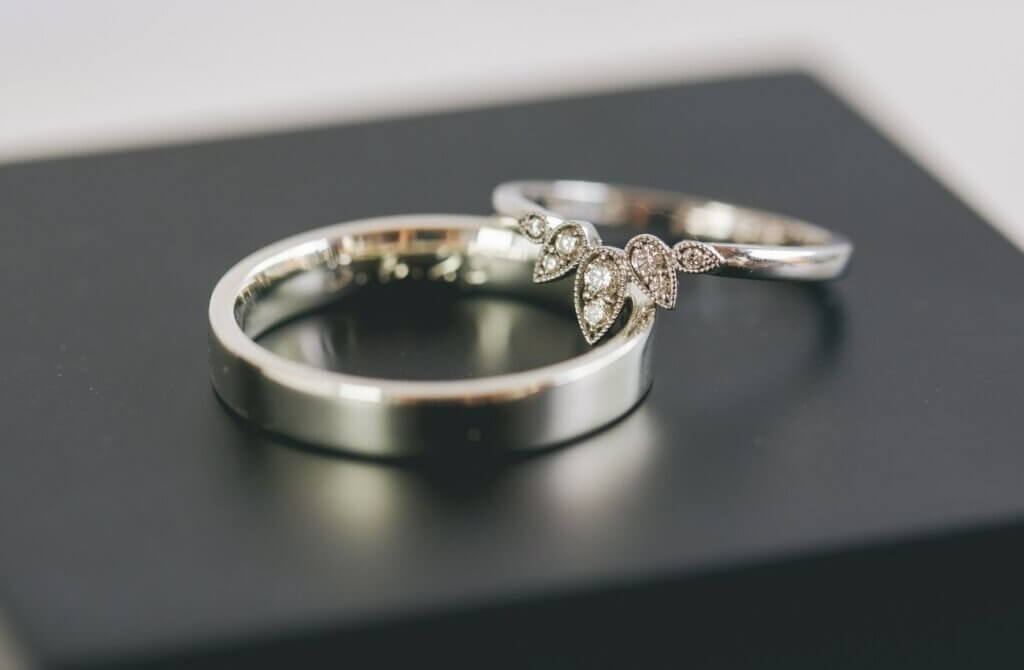
3. Profile
The profile refers to the cross-section shape of the band. Your choice of profile for the ring will depend on three things:
- Do you want to match your partner’s ring profile to give a sense of unity between the rings?
- The modernity of the design you are after – flatter profiles tend to look more contemporary whereas softer and more curved shapes look more classic. Curved profiles trick the eye into thinking the band is slimmer so your choice of profile can have an influence on the band width you go for too.
- The comfort factor – flatter and slimmer profiles tend to feel less bulky between the fingers but a curved interior to the profile can feel less restrictive and therefore more comfortable.
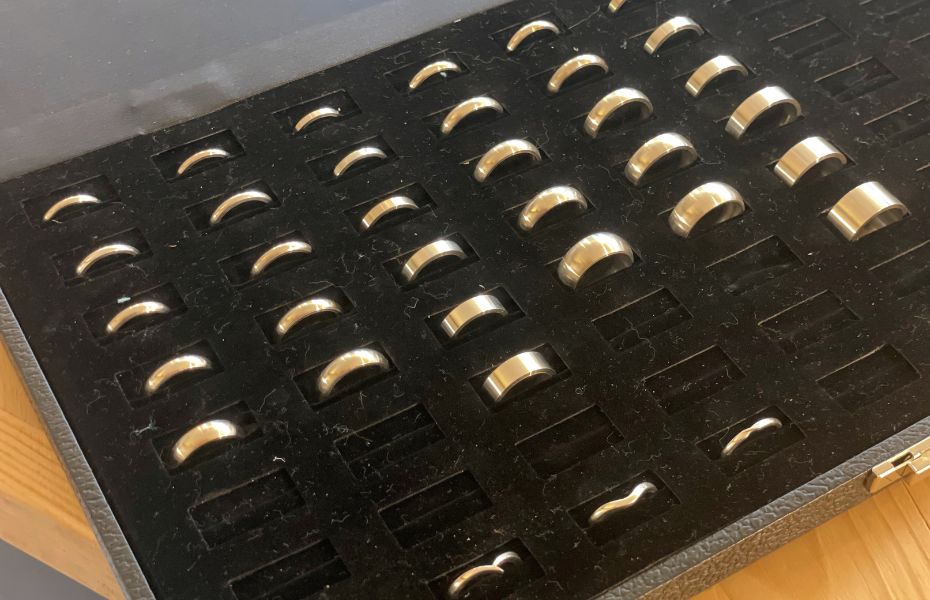
When I host couples for a design consultation, we chat about your initial ideas, wants and needs, and then take a look at my range of sample rings. They can help you visualise the final design and you can try them on your hand to see how they look and feel. If I work with you remotely, I advise my couples to go to the high street shops and try on some different rings for size to get an idea of what they look before our consultation. We can then talk through your findings and come up with something totally unique for you.
4. Depth
The depth of the band refers to the thickness of the metal. I recommend bands of between 1.6-2mm as they have a nice weight and sense of quality to them as well as being substantial enough to last a lifetime under normal wear. The more curved the profile is, for example, the halo or courting profiles, the deeper the band tends to be. I can advise you on this when you design your ring.
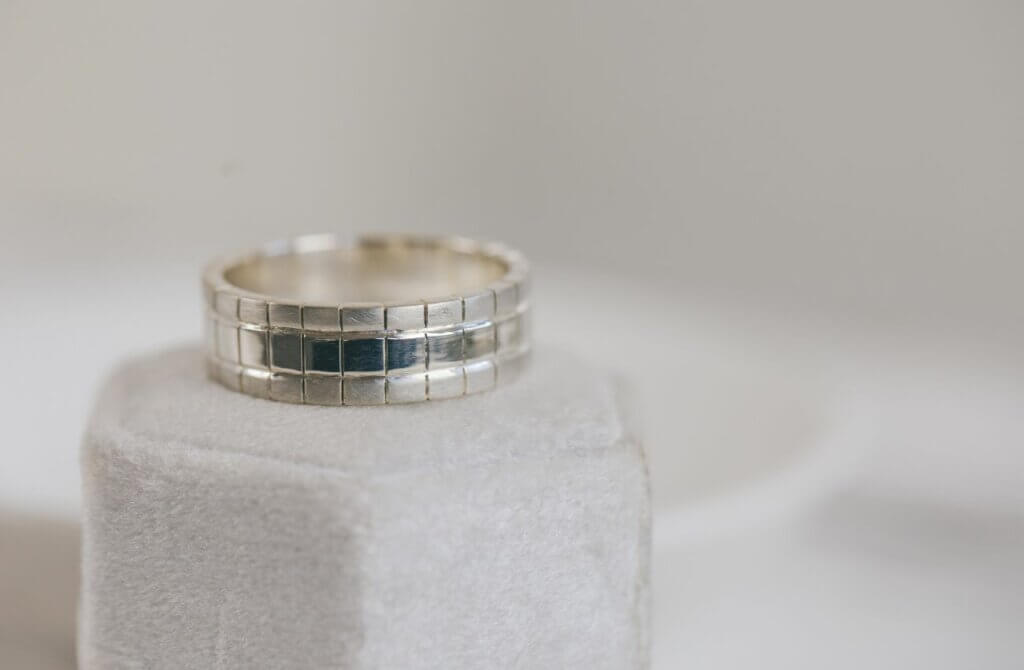
5. Additional design features
You might like to add some design details to make the ring unique to you and your relationship. Some men like to add a little design that nods a link to his partner’s ring, whereas others want something that portrays their personality and interests.
Design features to consider can include engraving, adding a texture or special finish, or setting gemstones into the surface of the ring. Engraving and flush set gemstones can be hidden inside the ring should you wish to have something personal between you and your partner. Here are some examples for inspiration:
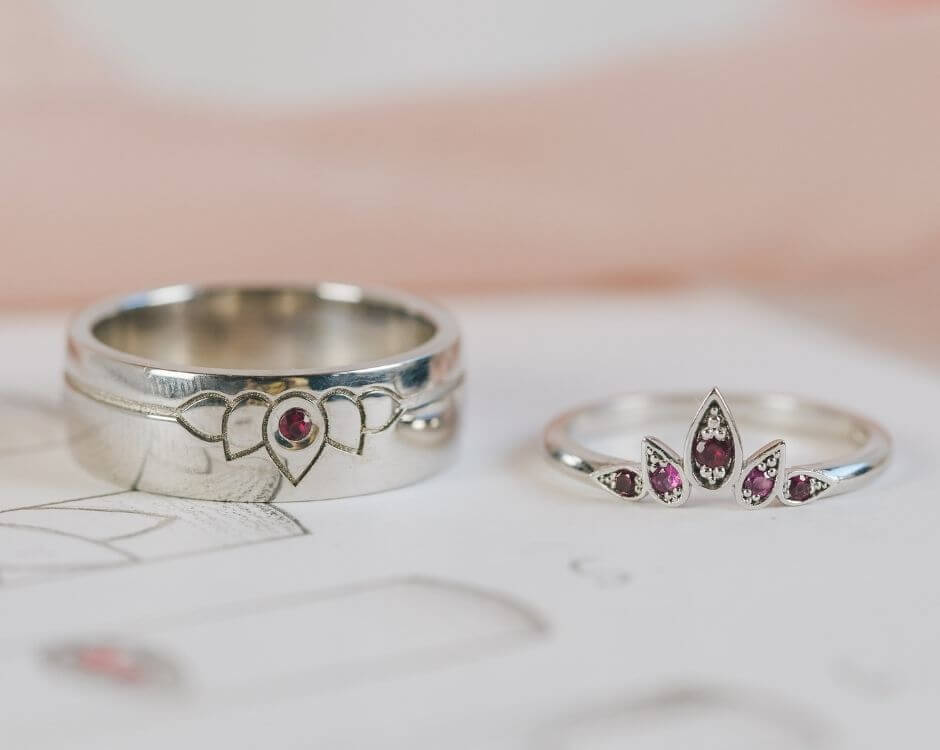
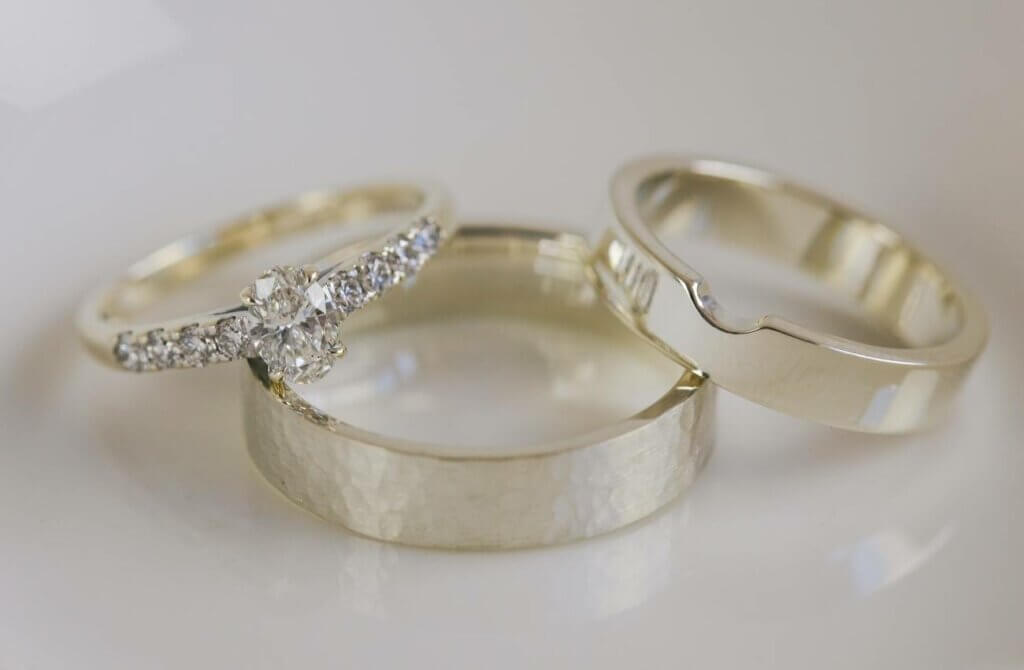
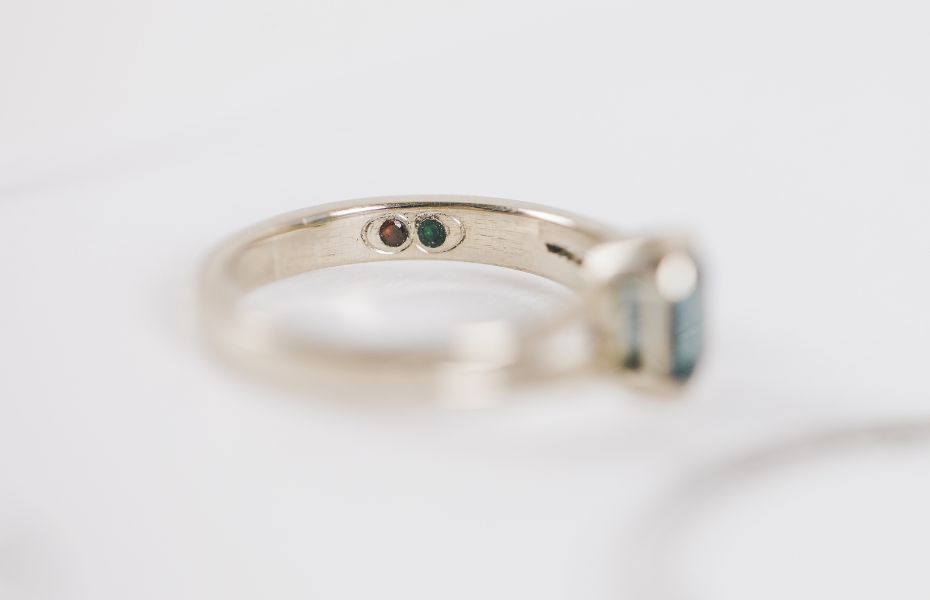
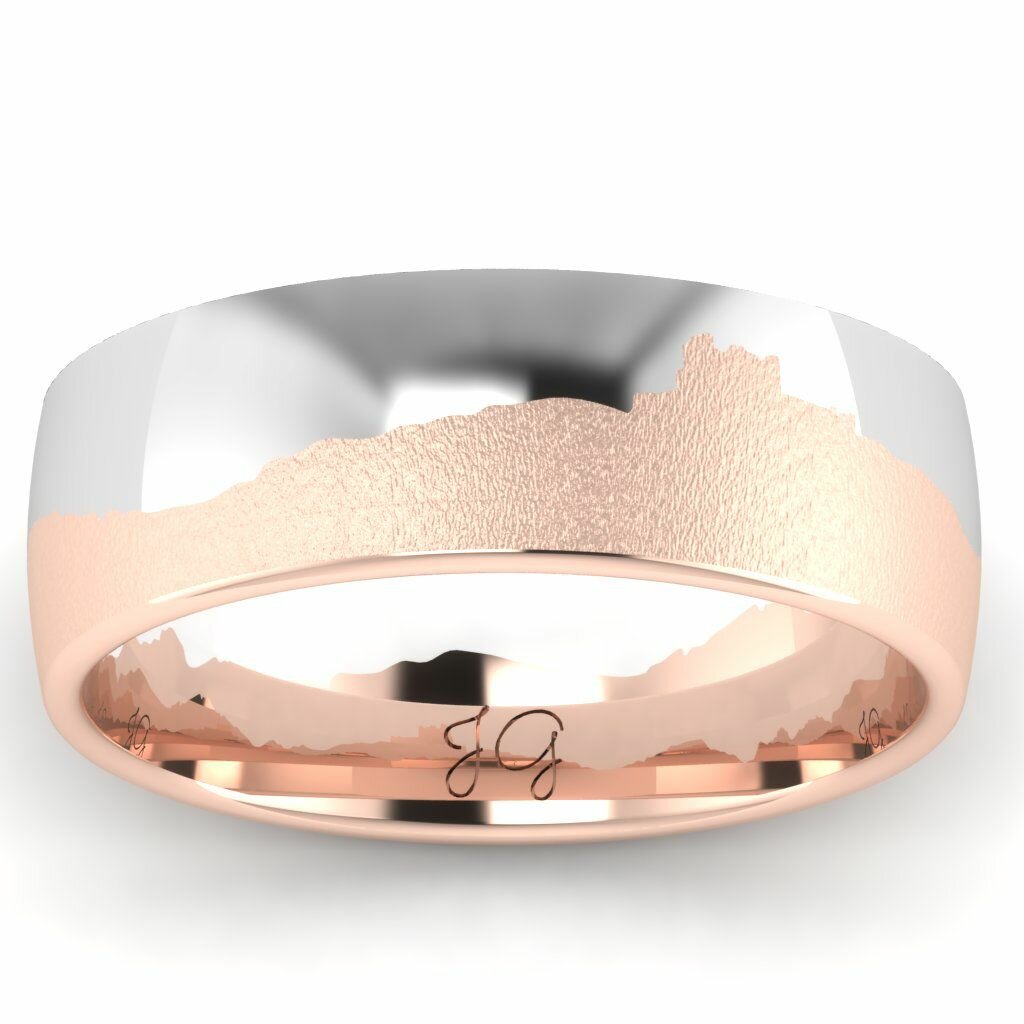
I hope that this article provides some structure to your thought process about your special ring and helps make the concept of choosing a wedding ring seem less daunting. My page about the bespoke process talks you through the steps in more detail. Why not take a look at some of the designs I have made in the past for some ideas and get in touch if you would like to discuss having your unique ring made.
You may find this woman’s guide to choosing a wedding ring helpful too.
